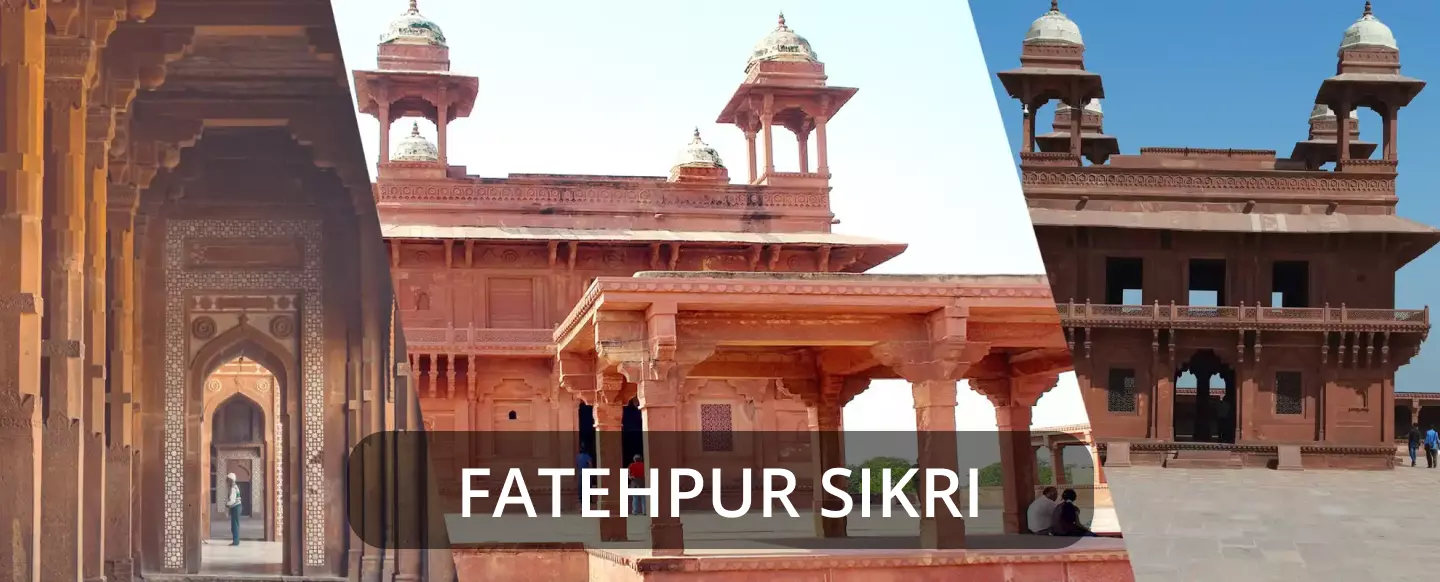
In India's Uttar Pradesh province, in the Agra district, sits the historic city of Fatehpur Sikri. Akbar, the Mughal emperor, established it in the late 16th century, and it served as the Mughal Empire's capital from 1571 until 1585. Due to lack of water, the city was evacuated after only 14 years. The beautiful architecture of Fatehpur Sikri, which combines elements of Persian, Islamic, and Hindu design, is well-known. The Jama Masjid, one of the biggest mosques in India, is the most well-known structure in the city. Another noteworthy building in the city is the Buland Darwaza, a colossal gate constructed to mark Akbar's triumph over the Gujarati kingdom. The Panch Mahal, a five-storey palace housing Akbar's harem, and the Diwan-i-Khas, a hall for private audiences, are two more notable structures at Fatehpur Sikri. The city is also home to a number of gardens, notably the Mughal retreat garden Daulat Khana. The amazing architecture of Fatehpur Sikri, which is now a UNESCO World Heritage Site, draws thousands of tourists every year who come to explore the city and take in its fascinating history.
The architecture of Fatehpur Sikri is a rare combination of Hindu, Islamic, and Persian forms, reflecting the Mughal Emperor Akbar's desire to create a tolerant and inclusive society. Locally sourced red sandstone was used to construct the city's buildings, which were then embellished with elaborate carvings and marble inlays.
The Jama Masjid, a sizable mosque with a great courtyard and a central dome decorated with geometric designs and Arabic calligraphy, is one of the notable buildings in Fatehpur Sikri. The Buland Darwaza is another; it is a huge gateway built to mark Akbar's victory over the Gujarati kingdom. It is made of intricately carved red sandstone that has elaborate designs.
The Diwan-i-Khas is Akbar's personal audience room where he meets with his ministers and advisors. It is a striking building with marble inlaid into its throne alcove and ornate stone columns. A sequence of columns and arches support the upper floors of the five-storey Panch Mahal, which previously served as a refuge for Akbar's harem and offers spectacular panoramic views of the surrounding countryside.
The beautiful marble mausoleum Tomb of Salim Chishti and the Jodha Bai Palace, which combines Islamic and Hindu architectural elements, are two other noteworthy structures in Fatehpur Sikri. Ultimately, the architecture of Fatehpur Sikri is a testimony to the cultural and aesthetic achievements of the Mughal Empire and continues to attract and dazzle visitors from all over the world.
After consolidating his control in northern India, Mughal Emperor Akbar established Fatehpur Sikri in 1569. Akbar aspired to build a new capital that would embody these qualities since he was a patron of the arts and a supporter of religious tolerance. He selected a location in the region of Agra since it was conveniently close to the Rajput kingdoms of Rajasthan. Fatehpur Sikri was built starting in 1571, and Qasim Khan, the Mughal royal architect, planned the city. Akbar's idea of a multicultural and tolerant society is reflected in the city's distinctive fusion of Hindu, Islamic, and Persian architectural forms. Just 14 years, from 1571 to 1585, saw Fatehpur Sikri act as the Mughal capital. Due to a water scarcity, the city was abandoned, and Agra was reinstated as the Mughal capital. The Mughal era saw Fatehpur Sikri as a hub of study, art, and culture despite its brief reign as the capital. After the Mughals, the British and then the Indian government conquered Fatehpur Sikri.
In conclusion, Fatehpur Sikri is a magnificent place that provides an insight into the rich history and culture of India.
| DO’S | DON’TS |
|---|---|
| Respect the regional traditions and dress modestly. | Do not alter the sculptures or monuments by touching them. |
| Before visiting mosques and other sacred buildings, remove your shoes. | Inside the facility, avoid bringing backpacks or heavy luggage. |
| To learn more about the site's history and culture, hire a local tour. | Avoid engaging in any immoral or forbidden behaviours, such as smoking or littering. |
| You should bring water and snacks with you because there aren't many food and drink options inside the complex. | Be away from touts and unlicensed tour operators who can try to deceive you or demand expensive costs. |
| To avoid the oppressive heat throughout the summer, visit the site from October through March. | Avoid visiting the website around religious holidays or festivals when it could be busy and hectic. |
| CATEGORIES | FEES |
|---|---|
| Indians, SAARC & BIMSTEC countries | Rs. 50 |
| Foreigners | Rs.550 |
| Children under 15 yrs | No Fees |
Fatehpur Sikri is open every day and visitors can enter from the time of sunrise until sunset, which is generally from 6:00 AM to 6:00 PM.
The historical structures of Fatehpur Sikri, which were erected under the rule of Mughal emperor Akbar, are well known. The city, which for a brief time servedas the Mughal Empire's capital, is renowned for its beautiful structures and architectural wonders.
It takes an hour or so to go by bus or automobile from Agra to Fatehpur Sikri, which is located around 40 miles away.
Every day from dawn until sunset, which usually occurs between 6:00 am and 6:00 pm, the monument is accessible to tourists.
Foreign visitors pay Rs. 550 per person in admission fees, compared to Rs. 50 for Indian nationals. Admission is free for those under the age of 15.
Yeah, it is believed that visiting Fatehpur Sikri is secure. Nonetheless, it is advised to use caution, be aware of your surroundings, and avoid entering remote locations alone, particularly at night.
Copyright 2012-2025 Indiamap Digital Private Limited. All rights reserved. Privacy Policy | Terms of Use